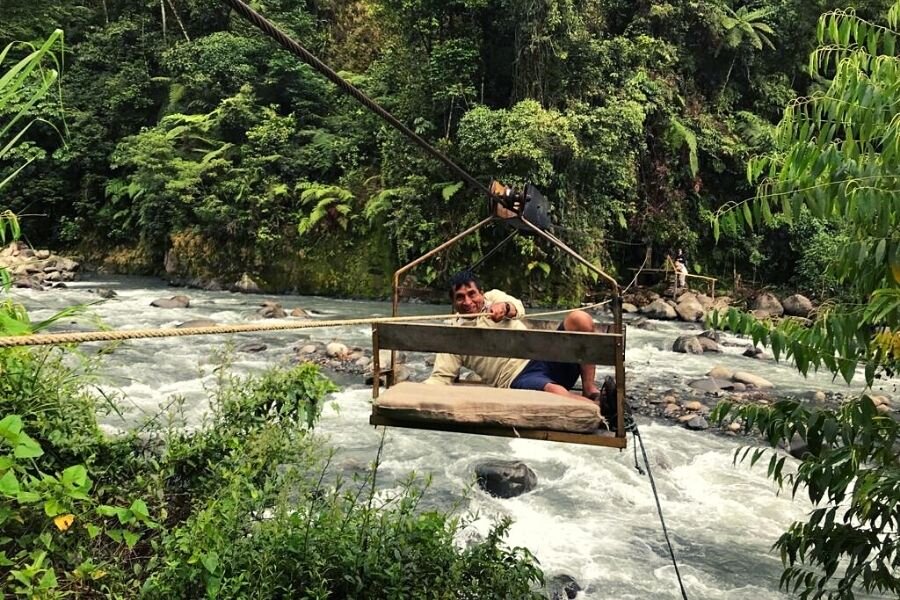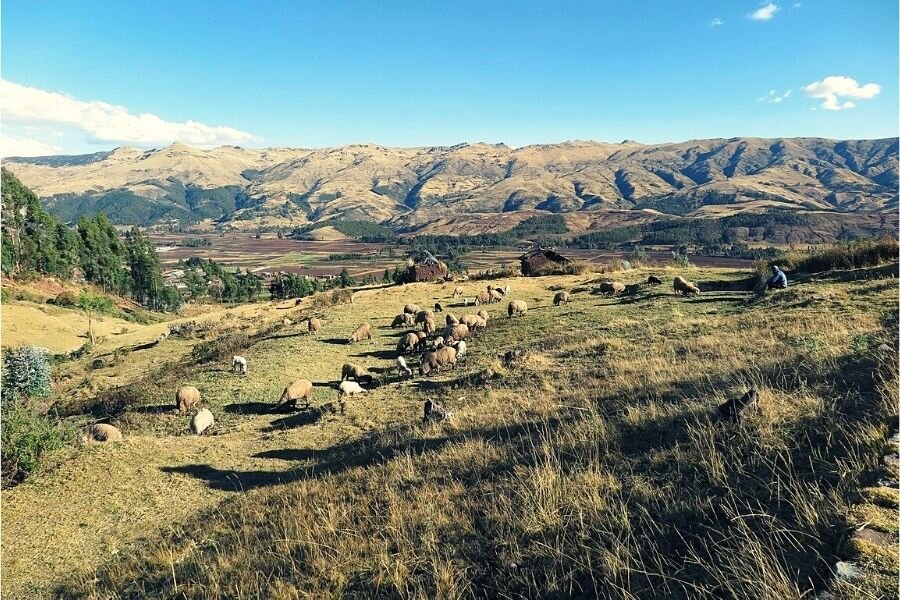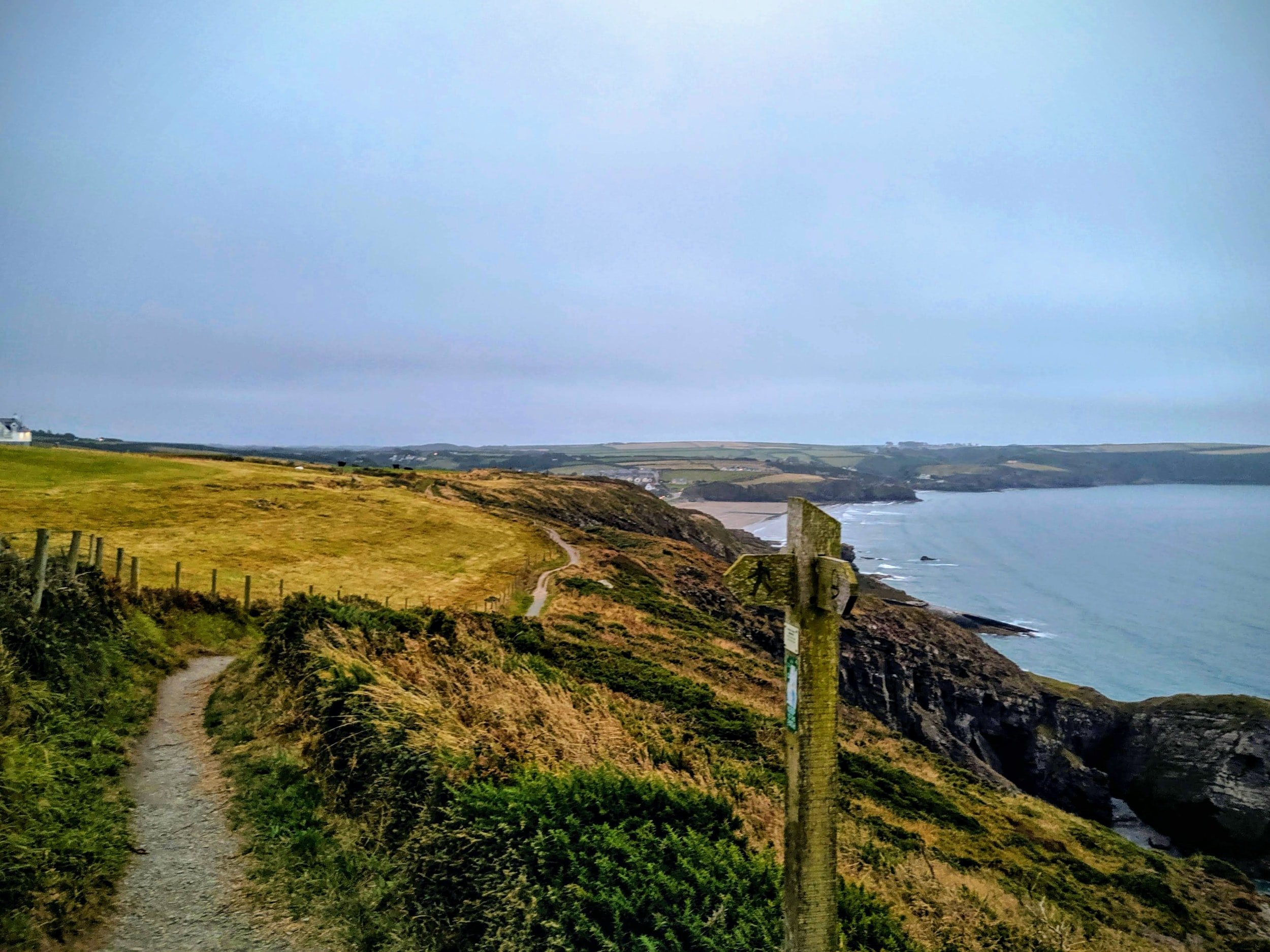Amazonian Wildlife Expedition in Peru
Author: Brad Frankel
Read time: 10 minutes
View our Peru trip ⟶
Flooglebinder curate educational adventures to create change for people and planet, which includes audits, workshops and residentials. As a BCorp organisation we use business as a force for good, meet the highest standards of verified performance, accountability and transparency, whilst tracking and monitoring our social and environmental impact.
The Amazon was on both of our bucket lists but it wasn’t until Nov’17 that we had the opportunity to visit. We headed out to Peru with a lifetime of documentaries and research articles running through our minds. I mean...we were going to the AMAZON!
As you fly in you can see pretty much all of Cusco, nestled in a huge valley, this simple, dusty but beautifully eclectic mix of buildings make it a great place to just wander and explore.
As soon as you land you feel a change, it has a subtropical highland climate and is 3399m above sea level in comparison to London, which is about 10m. In terms of landscape, Peru is home to the Andes and travelling through you’ll see valleys, temperate deciduous forests, grasslands, cloud forests and of course tropical rainforests (Jungle).
It's the perfect destination for students looking to gain incredible hands-on conservation experience, adults looking for extreme adventure and families searching for that once in a lifetime holiday.
The journey from the airport to the hotel is about 45minutes so we had plenty of time to check out this gorgeous city. Brad started to get a strange headache and a feeling that he unfortunately recalled from years ago, whilst travelling in Bolivia. It was altitude sickness and a horrible experience, so he drank plenty of coca leaf tea and laid down to sleep it off. However, I thought it would be wise to go for a run, which is something we always try to do, so keeping up our tradition I put my runners on and headed out. 5 minutes later I was back in our room laying down trying to shake off altitude sickness. It's a strange feeling, mild headache mixed with extreme tiredness - you just want to sleep and for about 2 hours that's exactly what we did. Feeling refreshed we walked into the city, it's beautiful by night, the main square is lit up, all of which is sat under a blanket of the brightest stars you could imagine.
Cusco is the oldest city in the Americas and a UNESCO World Heritage site. You can see the subtle influences of the Inca empire etched into sun temples, churches, ruins and plazas. The buildings are incredible, the markets are alive and there is a real sense of community spirit.
When you go to the markets, try to keep an open mind. Some things will be delicious, some not so delicious, either way it's fun to explore. We recommend the Lucuma fruit, it looks a little bit like a round mango but tastes like peanuts and toffee and in comparison to some of the fruit we tasted, it was amazing! After stocking up on some local delicacies, including a decent poncho, we made our way to the cloud forest.
What a journey this was, possibly the most beautiful way to spend 8 hours by truck.
The further you go, the more intense and vivid it becomes. The landscape changes from valleys and grasslands to cloud forests and jungle. There are some very traditional stop-off points for lunch but let's not mislead you, snacks here come in the form of a bag filled to the brim with local produce, looks a bit like corn, we passed it off as popcorn ;). The food along this journey is as local as it gets, albeit your entire consumption would have been grown within a 2/3minute walk from where you are sat and it's delicious. The food stall tuk-tuk type vehicle was a particular favourite. It was surrounded by kids in uniform all on their school lunch break and we pride ourselves on ‘eating local’ so headed there. Basically we’re halfway into the Amazon jungle and we got the Peruvian version of chicken and chips, it was awesome! We then stocked up on more fruit that we couldn’t pronounce and continued towards the cloud forest. 3 hours later after passing through more dusty towns and the occasional small waterfall, the scenery changed completely. We were now in the rainforest and we have never heard continued noise like it. Insects, birds, monkeys all proudly taking their role in the rainforest choir. An incredible feeling rushes over you and you can't wait to get out of the truck, enjoy nature's restroom and head off to your lodge for the night.
The walk to our lodge is one we will never forget.
“So we’ve just got out of the truck, stretched our legs, got our backpacks on and before we start walking down to the river we are immediately greeted with Peruvian woolly monkeys.
We had never seen this species before. They look like they are wearing an ill-fitted costume from a bad pantomime but captivating nonetheless. These guys are listed as endangered and just one on a long list of animals that the conservation project has been set up to protect.
So we get to the river and quickly realise that our current mode of transport (legs) are no longer required…. we have to cross the river in a pulley cart system suspended 3m above the white water. An incredible entrance and as soon as we crossed over (two at a time) we were met by the owners, a husband and wife team who must have the best smiles in all of Peru! We felt honoured and humbled to be there. We were shown to our room which was made up of a bed, super clean bedding and a mosquito net, basic but perfect and the view looks out over the river into an untouched jungle where the background noise is the aforementioned ‘choir’.
That evening we took part in a night walk which is a great way to see some of the wildlife. Be sure to have your head torch ready. The moths here are as big as your face, frogs the size of small dogs and an array of amazingly colour lizards, not to mention the spiders, scorpions and all the animals you could hear and not see! Biodiversity at its finest.
We woke at 4:45 am to see the Andean Cock-of-the-rock display… This was just a short trek, 30minutes up the mountainside to see one of the most amazing native birds. A bird that sort of resembles a rooster that resides on or near rock faces hence ‘cock of the rock’. We were here to see their very elaborate (bowing, head bobbing, jumping up and down and bizarre squeaking) breeding displays. Watching the males, in their super-bright plumage (outfit) is an incredible and unusual thing to experience. Especially when the dull brown female arrives to assess the best performer. You can all but hear the males saying ‘me, me, o pick me’.
After an awesome breakfast (pancakes and fruit) we made our way (2hrs) to the Amazon river. The boat journey to the research centre is pretty quick and 45minutes of absolute bliss, just river, wildlife and deep deep jungle.
Home for the next week was more luxurious than we were expecting… awesome wooden lodges, with a shower room view into the jungle, king size bed and rustic furniture. It was bloody gorgeous! The lodges are set in a semi-circle around a garden which is home to resident hummingbirds, leaf cutter ants and many more wonderful species.
We are greeted by the research team who showed us around the facility. It's beautiful and there’s a wonderful sense of balance and natural rhythm. The reserve is home to the largest concentration of birdlife in the world, with just over 900 species in Manu alone, to put this into perspective the UK has a healthy population at just over 600 but the UK is ~ 14 times bigger than Manu. This place is special!
Breakfast, lunch and dinner is all prepared on-site and we took it in turns to prep one of those meals during our stay. It's a wonderful way to connect and interact with the local chefs.
The main goal here is ‘to protect all species within Manu’. The programme itself has many different objectives from: agroforestry; bio gardens; mammal and avian monitoring, herpetology projects and the invertebrate surveys all of which are focused around ecosystem services, biodiversity and socioeconomics.
Whilst on-site it's early mornings Mon- Fri, wake up around 5am to head out into the jungle and carry out the respective surveys.
We remember going out to do the butterfly survey and the diversity of colours, prints and patterns was absolutely mind-blowing and made the species identification survey even more exciting.
Much more than the fermented fish bait they use to attract them in the nets - without doubt the worst smell either of us had ever experienced. You opened the tub and could smell this stuff from 20m away.
The night surveys are out of this world. Obviously we have head torches on but the fact that you're walking into the amazon jungle late at night to assess camera traps or mist nets for bats and nocturnal bird species puts your senses on red alert. We couldn't help but feel alive!
There is a real sense of family here, amongst the researches, conservationists, specialists, students, the team and the locals. The community spirit is what really makes this place so special. All working in different areas but towards the same goal.
The project caters for all, students, families, and adults it just depends how much time you want to spend here. For students this is the ultimate biodiversity conservation experience, honing in on your tropical research survey techniques. For the independent traveller, its nature's perfect hideaway and for families, this is an incredible 3/4 days that will leave your and kids breathless.
After the project, we made our way back to Cusco for a night before heading off to check out Lake Titicaca. We drove to Puno, hitting altitudes of 4335m above sea level, before taking a boat over to Amantani island, which has a population of around 800 families, of which we were fortunate enough to stay with one. The homestay experience was a little awkward at first due to the language barriers but once you overcome this through drawings, music, food, weird facial expressions and hand gestures, you all start to laugh at something.
A short stay but a great insight into their lives, their farming, their culture, their ceremonies, their food and their families. It was a very humbling experience.
After Amantani we made our way to Machu Picchu via the Km104 trail, which is a great option if time isn’t on your side or you don’t want to hike for too long. We took an early train around 4am and started our hike by sunrise. By midday, we were up at the sun gate looking down onto Machu Picchu - not a bad spot for a picnic lunch. In fact, probably one of the best you’ll ever experience. After taking in the views we made our way down to explore the site and what an incredible place. The story’s, myths, architecture, engineering and history are endless and you could spend days here, as many people do, but we had an incredible guide who broke it down in a really nice manageable 2-3 hrs. It can be quite frustrating and intense when guides overload you with info - especially after a 3am wake up and an 8hr hike. This is why the guides are so important, you need ones who can read you and understand, and appreciate your interests. Over the next few days, we wandered through nature reserves, checked out some beautiful and powerful waterfalls, cycled through the salt flats, SUP'd on pristine lakes and ate more delicious local food. It was the perfect few days to end the trip of a lifetime.
These blogs are written off the back of our inspection trips. When we hear about a project that we think will be suitable we get the ball in motion and first do our research. After speaking with the various stakeholders, we decide if it’s a programme that meets our criteria and values, and if so, plan an inspection trip. We use this to see as much as possible not just the project but to get a feel for: the logistics; the food; the rustic little markets and back street vendors; the hidden nature spots; the core culture of the community; and the people that bring these places to life.
We want you to get a real experience of these places and travel whilst understanding the social and environmental impact. Unfortunately, it means that not all of them (in fact most) don't even make it to the starting line because we don’t think they’re good enough. If they do, we then bespoke them for each of the different groups, i.e students, adults or families. The focus will always be conservation and sustainability, with the main difference being just time spent in different parts of the programme, the transport and accommodation category. The level of learning, engagement, activities and adventure is all up to you so just let us know what you like (or don’t) and we’ll help you design your perfect, life-changing trip built on purpose and impact.

































